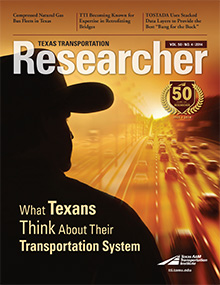
The No. 1 killer of U.S. teenagers is automobile crashes, especially during their first — and most inexperienced — year of driving. The Texas A&M Transportation Institute’s Teens in the Driver Seat® (TDS) program and State Farm® are enhancing their longstanding and successful relationship to prevent these tragedies.
State Farm recently provided $350,000 in grant funding for TDS to reach out to 100 new U.S. high schools — approximately 100,000 additional teen drivers — in 2015.
“We’re excited to build upon a six-year relationship between TDS and State Farm in Texas with this expanded initiative,” explains TDS Program Manager Russell Henk. “Our unique, shared approach is to positively influence teens to be safer drivers, rather than try to scare compliance into them.”
For the past six years, State Farm has provided $100,000 annually to help TDS positively influence teens in the state of Texas to improve their driving behaviors and embrace safer driving habits. TDS promotes awareness of the top five dangers of teen driving: driving at night; speeding and street racing; distractions, such as cell phones/texting and teen passengers; not wearing a seat belt; and alcohol/drug use. With the program’s resources and staff support, high schools undertake a variety of grassroots outreach activities throughout the year in their schools and communities to help create a traffic safety culture.
TDS has won more than 20 local, state and national awards for its efforts. Since TDS was founded in 2002, Texas has seen a 70 percent decrease in the frequency of fatal crashes involving 15- to 17-year-old drivers and is the only state in the United States to see a drop every single year over that time span.
The enhanced relationship with State Farm extends the insurance carrier’s Celebrate My Drive (CMD) program, which engages with teens where they learn to drive — their local communities. The program encourages teen drivers to safely celebrate their newfound freedom with awareness and attention to the driving task. Each year, the CMD program awards 100 schools — 50 with student populations below 750 and 50 with populations above that number — community grants for that purpose.

